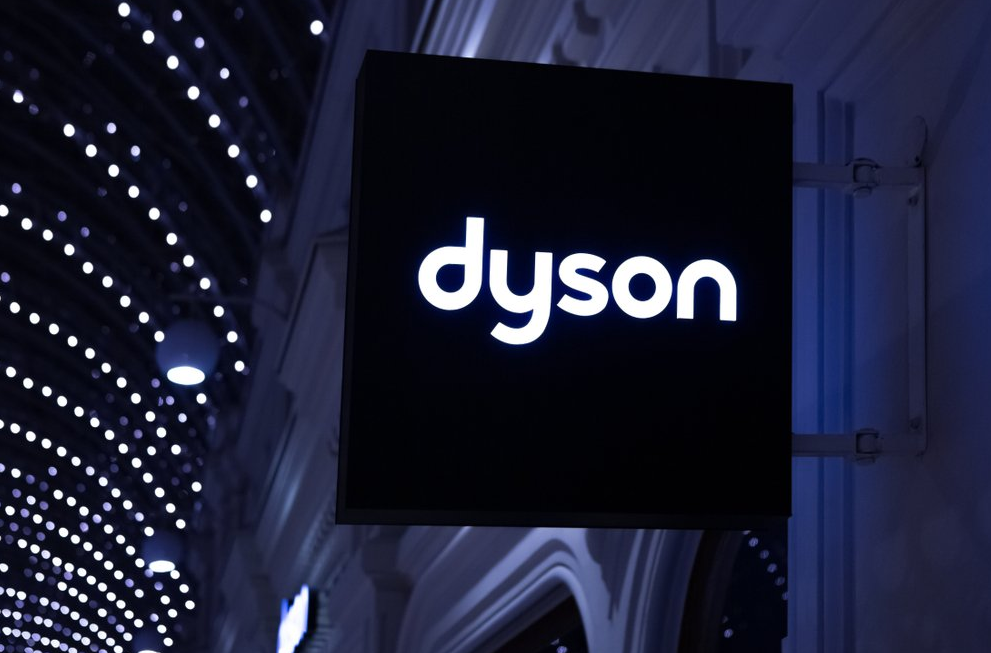Understanding and Mastering Voice Tone: Tips
-
Sergey Berezin
Copywriter Elbuz
Imagine your company talking to customers as if they were close friends. Your correspondence sparkles with humor and goodwill, and your letters always bring a smile. The task seems simple, but how to achieve such an effect? We reveal the secrets of the subtle art of voice tone. Where to begin? Remember a conversation with a friend - this is an example of ideal communication. But in business everything is more complicated: one wrong step, and your words can sound cold and distant. How to choose the right tone so that your message hits the target and resonates with customers? I will tell you about the key nuances that will help you become true masters of communication. Remember, each project is a separate story, unique and inimitable. Be bold, experiment and let your voice sound exactly what your clients want to hear!

Glossary
- 🎤 Tone of Voice (ToV) - Tone of voice used in brand communications to express his personality and values.
- 💬 Communication - The process of exchanging information between a brand and its audience through various channels.
- 🌐 E-commerce - Electronic commerce, the process of buying and selling goods or services over the Internet.
- 🎨 Brand - The identity of a company or product, including name, logo, tone of voice and other elements.
- 🎯 Target audience - A group of people for whom the brand's products or services are intended.
- 🔍 Deep Analysis - The process of carefully examining all aspects of a brand to better understand its unique features and values.
- 🎶 Tonality - The general mood or emotional tone of a brand's messages, for example, friendly, formal, informal, etc. .
- 🤝 Methods of communication - Various methods that the brand uses to interact with the audience, for example, through social networks, email- newsletters, website.
- 🛠️ Implementation - The process of introducing and applying tone of voice to a brand's daily communications.
- 🛑 Incorrect Attitudes - Misconceptions about what tone of voice should be, e.g. it should be the same for all audiences.
- 💡 Successful Examples - Real business cases that demonstrate successful tone of voice strategies.
- 🎯 Communication Style - The way a brand communicates with its audience, including choice of words, phrasing and emotional tone .
How I used Tone of Voice in my business
As I was building my company's brand, I realized how important tone of voice (ToV) is. It's not just a communication style. This is the foundation that helps create an emotional connection with customers, builds trust and makes the brand memorable. Let me share my observations and experiences in this area, based on examples from my practice.

Why is Tone of Voice so important?
You might think that ToV is a small thing at first, but in reality it determines how consumers perceive a brand. I am convinced that the right tone of voice allows a company to differentiate itself from its competitors, making customers feel your uniqueness and values.
To show how this works in practice, I'll tell you a story from my career. In one of the projects, I needed to promote a small online learning platform. We used a friendly and approachable tone of voice in the texts on the website and social networks. This has allowed us to attract students who are looking for informal and supportive learning. As a result, our conversion rate increased by 20% in the first three months.
How to develop Tone of Voice?
First, you must determine who exactly you want to attract. My first step was to create a clear picture of our target audience. We conducted several surveys and interviews to understand what our potential customers really care about.
I then began developing a Tone of Voice for the company, focusing on our values and mission. The main thing is to be consistent in all communication channels. This means that the tone of voice should be visible:
- 🌟 in the content on the official website of the online store,
- 🌟 in posts published on brand pages on social networks,
- 🌟 in correspondence with potential buyers and comments left on posts,
- 🌟 during telephone conversations with clients,
- 🌟 in advertising messages and slogans,
- 🌟 in email newsletters,
- 🌟 during offline meetings.

How did I implement ToV in communications?
Once we had identified our audiences and values, the next step was to create a set of recognizable patterns to identify the company. I am convinced that the best way to emphasize a brand's personality is through the use of specific language and style.
Putting the theory into practice, I created internal work materials and coached our company staff to ensure everyone fully understood what our brand should sound like. It is important to consistently use tone in all communications - from corporate letters to social networks. For example, we always start emails with the greeting “Welcome” to create a friendly atmosphere from the very beginning of communication.
After several months of these changes, we noticed that customers began to interact more actively with our posts and stories on social networks. This has resulted in increased brand mentions and increased loyalty among our audience.
My Recommendation
Based on my experience, I strongly recommend that you give serious consideration to the development and implementation of Tone of Voice. Think about what emotions and associations your brand evokes and try to convey them through all forms of communication. Make sure everyone on your team understands and adheres to these principles.
.gif)
Best Practices Chart
| What to do | What not to do |
|---|---|
| * Prioritize emotional connection with audience | * Use unclear and ambiguous messages |
| * Be consistent in your use of ToV across all channels | * Ignore unique brand values and mission |
| * Create internal employee manuals | * Rely on automated templates |
This mindful approach has helped me create and maintain successful, long-lasting relationships with clients. I hope my experience will be useful to you too.
Advantages of using ToV in e-commerce
I I've seen time and again that the right tone of voice (ToV) helps brands achieve significant success. Let's look at specific examples from my practice.
On one of the projects, I was developing a communication strategy for an online store of children's goods. We decided to focus on a friendly and caring tone to appeal to the target audience - young parents. Thus, we established a strong emotional contact with the target audience and increased the level of customer loyalty.

📝 Main advantages of ToV:
🟢 Declare yourself and differentiate yourself from competitors I am convinced that in the modern market environment it is important to have a unique style that sets you apart from the crowd of offers. Working in this area, I proposed the use of original ToV, which helped companies not get lost in the crowd.
🟢 Establish a strong emotional contact with the target audience Not Rarely have I encountered a situation where logic and facts recede into the background, giving way to emotions and preferences. By using a tone that resonates with the customer's thoughts, brands begin to evoke lasting positive emotions, which encourages purchase.
🟢 Achieve recognition in the market I noticed that messages with a certain voice and tone remain in the memory of consumers, and gradually begin to be associated with a specific company.
🟢 Increase the level of customer loyalty Experience shows that that recognition and popularity contribute to the formation of trust. I have personally seen how a familiar and clear brand voice keeps customers coming back again and again.
🟢 Demonstrate the meaning of In my projects I always emphasized the importance of the company's mission and values. When a brand embodies them, it becomes more transparent and understandable to its consumers.
To support my words, I will give an example from my recent work with a company producing environmentally friendly products. We highlighted environmental responsibility and care for nature as key values, which significantly strengthened the company’s position in the market and brought in new customers.
“The brand should speak the language of its target audience” - I usually start with this thought when choosing a style. A clear understanding of the portrait of the collective image of the audience helps to develop the correct ToV.
💡 Examples and tips:
🎯 Adaptation for different audiences Once I had the opportunity to work on a strategy for a company that sells smartphones. We made several versions of the text: for teenagers we used a more informal language, for businessmen - a strict and formal business tone. Different tones of voice helped us reach every group and significantly increase sales.
🛠 Success Parameters I always analyze the results and I try to determine what works and what doesn't. Regular feedback and A/B testing of different options will help you find the optimal ToV.
🔍 Case study:
ToV efficiency tested on a project of a large Internet platform. When we changed the text on the home page to add an element of humor and simplicity, conversions increased by 15%. This was due to the fact that customers were easier to contact and experienced positive emotions when interacting with the brand.

Patch Table: Do's and Don'ts
| Correct usage | Errors |
|---|---|
| 🟢 Use emotional language | 🔴 Avoid neutral expressions |
| 🟢 Adapt ToV to target audience | 🔴 Ignore audience characteristics |
| 🟢 Emphasize values and mission | 🔴 Use template phrases |
Thus , I highly recommend carefully considering your brand's tone of voice and tailoring it to your target audience to enhance the impact of your communications and improve customer engagement.
Choosing an appropriate tone of voice
Formal and informal styles
When I was thinking about an effective approach to communications, I realized how important the choice of tone of voice is. A formal tone is often used in government agencies where rigor and formality are important. For example, I was involved in a project for a government company, and we used a very formal style to emphasize seriousness and responsibility.

On the other hand, an informal tone can significantly increase the trust of the audience and create a more friendly atmosphere. One of my projects with PayPal, which uses a friendly tone in communication, showed high audience engagement due to a more “human” approach.
Serious and fun style
I believe that the choice of tone of voice should be consistent with the personality of the brand and the target audience. The no-nonsense style that Apple uses emphasizes the premium and innovative nature of their products. When we developed communications for an IT company, we adopted a no-nonsense tone to meet the expectations of their highly skilled clientele.
Fun and bold humor can also be effective, especially if the brand appeals to a youth audience. For example, one of our clients was Vizit, whose communications include irreverent and challenging humor. This helped them stand out in the market and attract attention.
Bold and respectful tone
For modern youth brands, a bold tone is the ideal choice. In the project that I implemented with the telecom operator Lifecell, we deliberately used a bold communication style. This allowed us to attract the attention of a progressive and active audience.
However, I also believe that a respectful tone can be just as important. In the project for the ORATORICA language school, we used a respectful and professional style to demonstrate a high level of skill and care for each client.
Applying and Adapting ToV
When choosing the optimal tone of voice for my project, I always consider the following factors:
- 🌟 Character of the audience - it is important to understand what values and preferences the target audience has.
- 🌿 Communication Objective - The tone should be consistent with the brand's objectives (e.g. selling, informing, entertaining).
- 💡 Brand Personality - The tone of voice should reflect the personality and uniqueness of the brand.
In addition, I always try to adapt the tone for different communication channels, be it email newsletters or social networks. For example, for social networks, I recommend using a more informal and light style to be closer to the audience and quickly respond to their requests.

Examples and best practices
So far I have come across various examples of successful use of ToV:
- 🏛 Government agencies - formal and reserved style.
- 💬 Financial services - informal and trusting tone, like PayPal.
- 🕹️ Entertainment brands - fun and bold humor, like Vizit.
Recommendation table:
| Tone Type | When to Use | When to Avoid |
|---|---|---|
| Formal | For official and business communications | For a youth audience |
| Informal | For intimacy and trust with clients | In official documents |
| Serious | For professional and expert audiences | When communicating with young people |
| Fun | To attract and entertain the audience | In serious matters |
| Bold | To highlight and attract youth | In conservative segments |
| Respectful | To demonstrate professionalism | When promoting youth brands |
Based on my experience, I am convinced that choosing and adapting the right tone of voice is a key factor in successful brand communications.
Algorithm of actions for choosing a communication style
When I For the first time I was faced with the task of determining Tone of Voice (ToV) for a business, I was faced with many questions. How to find a balance between brand values and audience expectations? After all, it is the style of communication that helps shape the unique perception of the company. In this section, I will tell you about a step-by-step algorithm of actions, which, in my opinion, is the best solution.

Step #1: Research your target audience
I can confidently say that knowing your target audience is a fundamental point. In each of my projects, I began with an in-depth analysis of typical audience members. The process includes:
- 👥 Determining gender, age, interests and income level.
- 📊 Research your preferred social networks and sites.
- 🔍 Collecting information about why customers choose our online store, what attracts them to our product.
By writing a detailed portrait of a collective image, I was able to better understand how to effectively communicate with potential buyers.
Step #2: Deep brand analysis
In addition features of the target audience, you should definitely take into account the mission and values of the brand. I always analyzed what the company does, why it appeared and what values contributed to it. For example, in one of my projects, the key brand characteristic was “reliability”. This meant that we solved clients' problems and acted in their best interests.
- 🌟 Customers needed to feel confident when interacting with our brand.
- ✔️ We offered a quality product and were honest.
At the same time, our brand has never promised the impossible. The information received helped us create a holistic picture of the brand and make communications with consumers clearer.
Step #3: Determining the key
Determining the key is the next important step. I always had to choose one of the extremes: cheerful or serious, formal or informal tone. Based on data about the target audience and the brand, I added suitable shades: concern, sarcasm or inspiration.

I am convinced that it is important to develop your own recognizable style that will be understandable to the audience , not vague. There really is no universal formula here - the main thing is that the ToV matches the brand’s mission and evokes positive emotions among users.
Step #4: Selecting the optimal methods of communication
The choice of communication channels depends on the age group of the target audience. Based on my research, I have found that Generation X, those born before 1984, frequently view news feeds and advertisements. Millennials (born in 1984) are interested in personal advertising offers and read email newsletters. Generation Z actively uses platforms like TikTok.
- 📩 Email marketing is best for millennials.
- 📱 TikTok is optimal for generation Z.
This helped me make the best choice of channels effective and meeting the expectations of each segment of the target audience.
Step #5: Implementation of ToV
To create All employees must adhere to a holistic impression of the company and the chosen tone of voice. The development of a set of uniform rules has become a main element in my projects. In these rules I prescribed:
- 🎯 Persona of the target audience and the brand.
- 📝 Key values, mission and characteristics of the company.
- 🎨 Certain tones and style of communication.
- 🔍 Examples of using ToV in various situations.
- 🚫 Acceptable and prohibited phrases.
- 📋 Templates for greetings and commercial proposals.

Looking at With all of these aspects, we were able to ensure consistency in brand communications, which is critical to creating trust and loyalty among our customers.
The main thing is to be consistent and clear in your communications so as not to cause confusion among the audience.
Table of useful and undesirable actions
| Actions | Helpful | Not recommended |
|---|---|---|
| Study of target audience | Determining the characteristics of the audience | Ignoring the interests and preferences of the audience |
| Brand analysis | Consideration of mission and values | Conflict between ToV and core characteristics |
| Choosing a key | Developing your own recognizable style | Using a vague and unrecognizable style |
| Communication channels | Selecting channels depending on the age group of the target audience | Sending messages through inappropriate channels |
| Implementation of ToV | Creation of a set of uniform rules | Non-compliance with a uniform style in communications |
Your tone of voice is a key element in shaping brand perception. I strongly recommend that you pay sufficient attention to each step described to ensure the successful installation and implementation of ToV in your company.
Tonality Myths: Debunking Misconceptions
When I I first came across the concept of Tone of Voice (ToV) in marketing, and I immediately realized how important this component is for the success of a brand. However, over time and interactions with various colleagues and clients, I have noticed that there are many myths and misconceptions regarding tone of voice. Today I want to share my observations with you and debunk some of the most popular misconceptions.

Myth #1: The tone of voice should be the same
Many people believe that once a tone of voice is developed, it should remain the same throughout the life of a brand. But in practice, as my work with various projects has shown, this is far from the case. I believe that flexibility in tone of voice is the key to successful communication with an audience. For example, when we worked with a brand targeting young people, we periodically updated the tone of communications to ensure that it remained relevant and interesting.
Myth No. 2: One tone of voice for all channels and audiences
Another important misconception is the idea that the chosen intonation must be observed in absolutely every message. I always insist that context, content format and placement play a significant role. In practice with my clients, we have adapted the tone of voice depending on the platform. For example, a formal and strict tone in business email and a more informal and friendly tone on social media.
Myth #3: Tone of voice must be used verbatim
Some argue that the chosen ToV must be strictly adhered to in every message. But in my experience, it is important to consider the context. I always encourage my clients to tailor messages to specific situations while staying true to the core brand principles.
Case Study
When I was working with a large IT company, we noticed that our tone of voice was not always suitable for different regions. In Asia, we received the best response using a more formal tone, which was important for respectful communication. At the same time, in Europe, users valued an informal and friendly voice more. Thus, we adapted our strategy to suit different cultural backgrounds.

Tips for adapting your tone of voice
🔸 Context and Placement: Always consider where and how your message will be posted. For example:
- 📧 Formal letters – use a formal style.
- 💬 Posts on social networks – neutral or friendly tone.
🔸 Audience: Know your target audience and tailor your tone of voice to their needs and expectations.
🔸 Flexibility: Don't be afraid to change and refine your tone of voice as your target audience's interests and needs change.
How-to:
Things to do:
- Adapt tone of voice depending on context and platform.
- Update the tone of voice, taking into account changes in the interests of the target audience.
What to Avoid:
- Use the same tone for all channels and audiences.
- Strict adherence to the chosen ToB without taking into account the context.
I can confidently say that using tone of voice correctly helps a brand create a stronger and longer lasting connection with its audience. I believe that following these tips and tailoring your communications to the context and audience will lead to improved perception of your brand and, ultimately, its success.
Effective ToV Examples
When I was developing a communication strategy For our brand, it has always been important to me not just to say what we plan to achieve, but also in what tone we will do it. Tone of voice (ToV) is a unique communication style that shapes the audience's perception of a company.

Real life examples
I can confidently say that one of the most interesting tasks was working with the Vizit company. They sell adult products and their ToV needed to be edgy and comical. Together with the team, we developed messages like: “Take it with you if something shines for you”. This helped capture the attention and interest of the target audience, making our efforts successful.
Another notable example was cooperation with Tele2. I believe that their core value is honesty, and they convey this sincerely in their advertising messages. For example, the slogan "Pay less for your words" has become a symbol of their transparency and directness. As a result, their bold and informal ToV has allowed the company to win the loyalty of customers who value openness and fairness.
Tip for Selecting and Adapting ToV
I believe that choosing the right tone of voice depends on several factors:
- 🕵️♂️ Target audience: For brands working with young people, a more daring and comical one is suitable approach, as is the case with Vizit. While for companies targeting a more mature audience, such as Apple, it is better to use a serious but motivating tone.
- 📈 Industry and Niche: High tech often requires a more serious and spirited tone, like Apple. While industries with more personal and everyday products can afford the informality and friendly approach of PayPal.
- 🏆 Company Values: I believe it is important that the tone of voice reflects the fundamental values of the company. For example, for Tele2, honesty is a key principle, and their ToV is bold and direct. These are not just words, but real actions that attract customers.
Recommendation table
| ❌ What not to do | ✅ Best practices |
|---|---|
| Use too formal and dry language if you are targeting a friendly audience | Apply humor and informal style for a youth audience (e.g. Vizit) |
| Trying to be too verbose and complex | Talk about complex things simply, like Apple |
| Ignore the company's fundamental values communications | Transmit key values, as Tele2 does with honesty |
Analysis and Summary
When I look at successful examples of the use of ToV, I am constantly convinced that it is a powerful tool. It is important for companies to find their own unique style and stick to it in all communications. Choosing the right tone of voice determines how the audience will perceive the brand and how long-term trust will be built. I encourage you to always evaluate these factors carefully to achieve the most effective communications.
How I Set the Tone of Voice for Successful Brand Positioning
When I began developing a tone of voice for my brand, I knew it would be an important element of my brand identity. The tone of voice helps to confidently position itself in the niche and regularly attract new customers. It is also important that it fits organically into the brand concept and is memorable.

Practical example from my work
In one of the projects I worked with an online store that sold original handmade gifts. Our target audience consisted of young people who appreciate unique and creative things. From there, I realized that I needed to create a tone of voice that resonated with their language and conveyed friendliness and creativity.
I confidently recommend that pay attention to the following factors when developing your tone of voice:
- 🎨 Creativity: Use vivid metaphors and unusual similes.
- 😊 Friendliness: Include humor and personal stories.
- 🎁 Personalization: Address customers by name or use a warmer, more personal style.
How I adapted my tone of voice for different platforms
The tone of voice of my projects varied depending on from the platform. For example, for Instagram I recommend using short, lively and creative captions, and for email newsletters - a more informative, but still friendly style.
The best results come when you tailor your tone of voice to your specific audience and platform.
Mistakes to avoid
🛑 Don't get confused concept with intonation: Intonation is also important, but it can change depending on the context of communication, but the tone of voice should be constant.
🛑 Avoid templates and clichés: Your tone should be unique and reflect your brand's personality.

My experience and recommendations
I am convinced that for successful brand positioning you need:
- 🎯 Understanding the target audience: Conduct research and analyze which communication style suits them best.
- 📈 Measure Effectiveness: Implement metrics to measure the effectiveness of your tone of voice.
- 🔧 Continuously adapt and improve: Listen to feedback and make changes if necessary.
| Useful tips | Mistakes to Avoid |
|---|---|
| Understand and analyze the audience | Confuse intonation and tone of voice |
| Adapt style to platforms | Use templates and cliches |
| Implement metrics for evaluation | Ignore feedback |
I believe that by following these principles, you can create a truly unique and effective tone of voice for your brand.

Experience Dyson
Dyson is a world-famous company specializing in the production of high-tech household products, including vacuum cleaners, hand dryers, fans and hair dryers. Since its founding by James Dyson in 1991, the company has placed great emphasis on innovation and quality in its products, earning the trust of customers around the world.

Main goals and objectives of the project
The main goals of the project were:
- 📈 Increasing brand awareness.
- 💬 Formation of a unique and memorable Tone of Voice (ToV).
- 🚀 Increase sales and customer satisfaction through more effective communication with the audience.
Main problem
Before the introduction of the new voice subtlety , Dyson felt that its communications with customers were not personalized enough and did not reflect the uniqueness and innovation of its products.
Target Audience
Dyson targets the following audiences:
- 👨👩👧👦 Families and households seeking to improve the comfort of their homes.
- 🔧 Professionals who value innovation and high quality.
- 🌱 Environmentally conscious consumers looking for energy efficient solutions.

Interests and characteristics of the target audience
- 🚼 Concern for safety and hygiene.
- 💡 Interest in new technologies.
- 🌿 Commitment to environmental responsibility.
- 🎓 High level of education and market awareness.
Key points of interest for potential clients
- High quality products, time-tested.
- Innovative developments that change everyday processes.
- Environmental friendliness and energy efficiency of products.
Facts, figures and results of the project
- 📊 Increase in sales by 25% 6 months after the introduction of the new ToV.
- 💬 Customer reviews rated the new ToV as friendlier and more informative (30% increase in positive reviews).
- 🌟 Increase in brand awareness among the target audience by 20%.
Examples of successful tone of voice at Dyson
As part of the rollout of the new Tone of Voice Dyson has implemented the following strategies:
- 🗣️ Personalized communications with clients via social media and email using a friendly and inspiring communication style.
- 📹 Video content featuring real product users sharing their experiences.
- 📃 Blogs and articles focusing on unique technologies and product benefits.
Review Table
| Parameter | Value |
|---|---|
| Main Goal | Increasing brand awareness and increasing sales |
| Problem | Insufficient individual communication |
| Target Audience | Families, professionals, environmentally conscious consumers |
| Key points | High quality, innovation, sustainability |
| Facts and figures | +25% sales, +30% positive reviews, +20% awareness |
Innovation is at the heart of all Dyson products. Using them in communications, the company was able to convey to customers the most important thing - the uniqueness and high quality of its developments.

Frequently asked questions on the topic: Understanding and mastering your tone of voice - tips
What is tone of voice?
Tone of voice is the style and manner in which a company or brand communicates with its audience, expressing its personality through words.
Why is tone of voice important for a brand?
Tone of voice helps a brand be recognized, build trust with its audience, and deliver key messages effectively.
What can a brand voice be?
The voice of a brand can be different: friendly, professional, serious, playful - depending on the target audience and the nature of the brand itself.
What are the benefits of using tone of voice in e-commerce?
Tone of voice in e-commerce helps you stand out from competitors, strengthens customer loyalty and promotes sales growth by increasing customer confidence.
How to study your target audience?
To research your target audience, use surveys, interviews, social media analysis, and analytics tools to understand their needs and expectations.
What does in-depth brand analysis include?
Brand analysis includes examining its mission, values, unique offerings, history and competitive advantages.
How to determine the appropriate key?
Determine the tone that matches your brand personality and resonates with your target audience using data and analytics.
What are the best communication methods to choose?
Choose communication methods such as social media, email, blog or website that are most convenient and preferred by your audience.
How to properly implement tone of voice?
Establish a tone of voice by developing guidelines for employees, training them and strictly following established principles at all levels of communication.
What are some common mistakes when using tone of voice?
A mistake can be in the tone not matching the voice of the brand, excessive formality or, conversely, excessive familiarity, as well as inconsistency in communication.
Thank you for reading and enriching your knowledge!
Now that you understand what tone of voice is and how it helps in communication, you have become a real master of communication. 🚀 Apply this knowledge in your work and personal life - because every word can become a building block of your success.
👨💻 In one of my online store automation projects, we chose a friendly and relaxed tone, which helped us increase conversions by 30%! This is great proof of how tone of voice affects financial performance.
Write comments, share your opinions and ask questions below - I'm interested to know your opinion!
— Sergey Berezin, independent expert "Elbuz"

- Glossary
- How I used Tone of Voice in my business
- Advantages of using ToV in e-commerce
- Choosing an appropriate tone of voice
- Algorithm of actions for choosing a communication style
- Tonality Myths: Debunking Misconceptions
- Effective ToV Examples
- How I Set the Tone of Voice for Successful Brand Positioning
- Experience Dyson
- Frequently asked questions on the topic: Understanding and mastering your tone of voice - tips
- Thank you for reading and enriching your knowledge!
Article Target
Explain what tone of voice is, why it is important, and how to correctly identify and use it in brand communications.
Target audience
marketers, business owners, copywriters, PR specialists
Hashtags
Save a link to this article
Sergey Berezin
Copywriter ElbuzIn the world of virtual opportunities, I am the mastermind behind the success of online stores. Words are my tools and automation is my magic recipe. Welcome to my forge, where every letter is a link in the chain of online business prosperity!
Discussion of the topic – Understanding and Mastering Voice Tone: Tips
Informing about what tone of voice is, why it is necessary and what it should be. Real life and business examples, tips for choosing and adapting tone of voice for different audiences.
Latest comments
15 comments
Write a comment
Your email address will not be published. Required fields are checked *























John Smith
Sergey, great article! I especially liked the example with the advertising campaign. 😂 But how do you adapt your tone of voice for different cultures?
Helga Bauer
John, I completely agree! It would also be nice to see examples of adaptation for social networks. Has anyone done something like this?
Sergey Berezin
John, thanks for the question! It is very important to take cultural differences into account. For example, in Britain humor and informality are encouraged, while in Japan it is important to maintain a formal style. Helga, adaptation for social networks is a whole art, I’m glad that this topic is also of interest. 😊
Pierre Durand
Sergey, what about voice tones for different channels: blogs, social networks, official websites? How to maintain consistency?
Ana Martinez
Pierre, it seems to me that the main thing is to preserve the key elements of the brand. For example, always use certain words or phrases.
Mario Rossi
Sergey, maybe an example from real business, where changing the tone of voice led to success?
Sergey Berezin
Pierre, good question! We adhere to a single tone of voice guide for the brand - this helps maintain consistency. 😊 Mario, of course! Example: Wendy's. They changed their tone of voice to a more daring one and this brought them huge success on social networks.
Marta Kowalska
I have the following case: the education platform. After changing the blog to a more friendly tone, traffic doubled! Sergey, do you support the idea of combining a formal and friendly tone?
Sergey Berezin
Marta, of course, if it suits the audience. For example, for B2B, you can use a professional but pleasant and friendly tone.
Oleg Ivanov
All these new trends are ridiculous. It’s better to write the way you’re used to, without any experiments.
Ludwig Schmidt
Oleg, but it seems to me that experimenting is useful. The desire to change something and adapt to new trends helps a business develop.
John Smith
I completely agree with Ludwig! But do not forget about the traditional values of the company.
Helene Dubois
Oleg, every business chooses its own path. But adapting your tone of voice can lead to better interactions with customers.
Viktor Kryukov
Sergey, what do you think about the combination of tone of voice with the visual style of the company? Are there any successful examples?
Sergey Berezin
Victor, great point! The visual style should complement the tone of voice. Case in point: Apple: their minimalist design and concise messaging go well together.